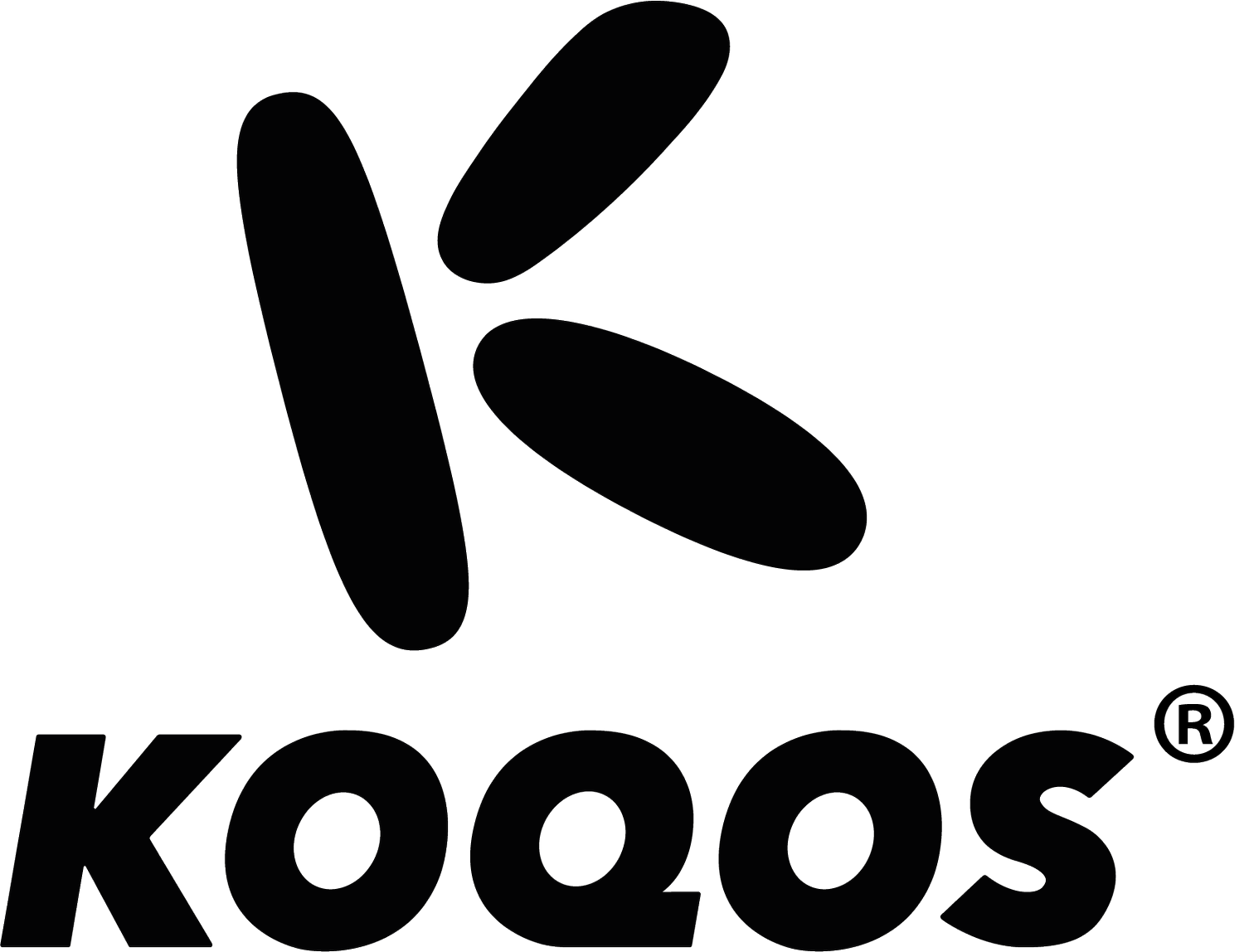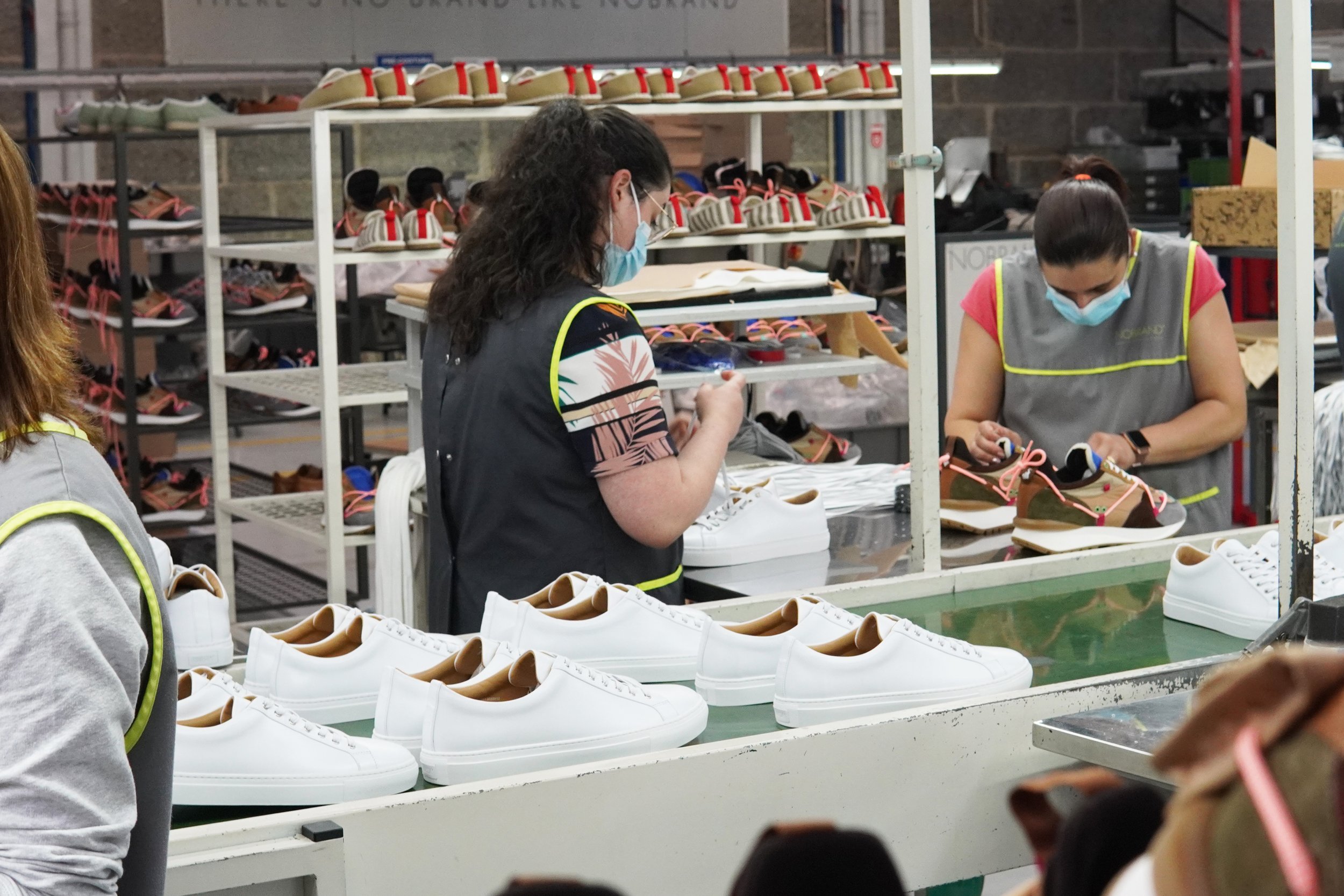KOQOS LGND: What I learned in one year of creating a new sustainable sneaker
A little over a year ago, I created the blog that you are reading right now. I called it KOQOS and started doing a deep dive into everything related to sustainability and sneakers. Before this, I had been interning for half a year at a local footwear brand. Here, I was asked to explore the topic of sustainability in the sneaker industry and set up a strategic roadmap for sustainable development and implementation. Even though I am what some people might call a ‘sneakerhead’ (someone who is crazy about sneakers) and my studies are increasingly focused on topics like design for sustainability and a circular economy, I hadn’t been aware of the environmental and social impact related to sneakers before. But once you take a sneaker apart piece-by-piece, you quickly realize how problematic these products can be (see image below). After the internship, I went back to school and started pursuing a master's degree in strategic product design at TU Delft, but I kept playing around with the idea of creating an entirely new sneaker with respect for people and planet.
Eventually, I started to find some promising sustainable shoe brands. Some of them had been on the market for more than ten years, while others had just been funded through platforms like Kickstarter and Indiegogo. Even though a lot of these brands were making great efforts to balance sustainability with style, none of them gave me the excitement me and other ‘sneakerheads’ were looking for in a new pair of sneakers. And that’s a shame, because I believe that those who are crazy about sneakers and part of that core community can really drive the change for a more sustainable sneaker industry. Furthermore, all of these conscious footwear brands were taking a different approach to sustainability, which left me confused as to what I should be looking for in a pair of more sustainable sneakers. One year ago I decided that I wanted to find out what it would take to create a sneaker brand myself that aligns with my core values and is able to bridge the gap between those who are crazy about sneakers and those who are invested into a sustainable lifestyle.
I am now standing in the middle of the development process and I have been juggling design, development, production and marketing. Through a lot of trial and error I managed to find great people to work with and I have a greater understanding of sustainability in the sneaker industry. In this article, I briefly reflect on my experience of developing a new sustainable sneaker brand from scratch. I summarized these into three lessons that I will take with me into my future as a designer, entrepreneur and simply as a person who believes he has something to offer and wants to make it happen.
1. Align your own stars
As a design student with a passion for sneakers, I jumped on the first opportunity I had to intern at a footwear company in my third year of university. I knew it was the direction I wanted to go in and I literally started knocking on doors of companies until one said yes. To be honest, I didn’t know much about sneaker design beforehand and when I look back at the first drawings I made back then, I’m really thankful for the people that gave me the opportunity to develop myself.
During my first year of pursuing my master’s degree in Industrial Design, I started looking for new opportunities to learn by doing. As a design student, it is quite easy to become a little bit too comfortable with continuously generating new ideas for slightly different cases and setting up strategies that you will never execute. I started looking for new interships, but, going from one lock down to another, I was not able to find one that aligned with my skills and with what I wanted to learn. However, I still felt like I had something to offer and I thought there would be great value in finding out firsthand what challenges I would encounter in creating a new product and doing it with respect for people and planet. So I made a little blog and started posting my research about sustainability in the sneaker industry on instagram and LinkedIn. The first step led to the next and I eventually started finding others that were on a similar journey. Posting my first blog article and approaching one manufacturer after another eventually led to me finding great people to talk to and partners that could help me with getting one step closer to actually creating a brand new product.
One hurdle I learned to overcome was my tendency to wait for perfection. Instead of being insecure and trying to be a perfect answer, I learned the value of simply starting a conversation. By sharing as much of my findings as possible, I was able to crowdsource the information I needed. In the end, I strongly believe that you have to reach out and align your own stars if you think you have something to offer. Make the first move, be patient and adjust along the way.
2. Broad perspective, laser focus
At the beginning of my research on sustainability in the sneaker industry, I mainly read reports that presented animal leather as one of the main drivers of environmental and social impact in the sneaker industry. This resulted in me solely focusing on finding vegan leather alternatives and trying to create a product that avoided any use of animal derived materials. However, I found myself at a crossroad when I started testing some of these materials. I experienced that most leather alternatives did not have the performance I wanted or that they would bring new challenges regarding sustainability and ethics. At one point I started seeing a lot of new brands promoting these materials as the ultimate solution, quickly launching entire product lines based on vegan leather substitutes. I started questioning if this was truly the best way to approach the problem and I wanted to know how I could bring something new and futureproof to the table that would actually have a lasting positive impact. Eventually, I managed to shift my slight tunnel vision towards a more holistic approach by focusing on three stages of the product life cycle: production, use and end-of-use. Now, I believe that consistently improving on all three of these aspects is essential to creating products that are truly better for people and planet.
However, you can’t do everything at once. At some point you have to make a choice and decide what gets done now and what is better left to implement in future iterations. Creating a To Do list (things to do now) and To Don’t list (things to do later and you are not allowed to work on right now) helped me with not getting distracted too much with new ideas popping up in my head every day. I learned that I needed to think the overall brand and product concept through. But once that was established, I needed to stop being distracted by other fun ideas and projects that other people were doing. Simply get to work and craft something that will serve as a starting point for something great.
3. If you wish to make an apple pie from scratch, you must first create the universe
When the canvas is blank, you can create any artwork you want. But at some point, the artwork has to be turned into a blueprint for a product that actually has to be produced within time and monetary constraints. The idea for a new sustainable sneaker brand started in my head, but bringing it into the real world requires a ton of collaboration with different people I met inside the footwear industry. My studies and previous work experience had equipped me with the basic tools to go from idea to concept, but I personally had no experience with physically developing and producing sneakers. Fortunately, there are a lot of people that have, I just had to find them.
Something important I found out after six months of trying to develop a great sustainable sneaker was that I had underestimated the ‘great sneaker’ part of the equation. I had worked so hard on finding out what makes a more sustainable sneaker, but if the product isn’t great, there is no point in creating it. My first prototype did not resemble the idea I had in my mind and I needed to find a new partner to help me develop a product that would actually add something to the existing sneaker market.
Eventually, I managed to find a great new development partner and the switch allowed me to make some final adjustments to the sneaker design that I wanted to create. Two weeks ago, I visited the factory in Portugal were the prototype was created for the first time. It was crazy to see how sneakers are actually created. Spending time inside the factory and talking directly with the people that are developing and producing your product is simply amazing. You can work much more quickly and with so many different sneakers in existence, there is a solution to almost every problem. You don’t have to come up with everything yourself and start from scratch.
At the beginning of this project, I started working in a local shoe retail store to earn the money I needed to keep the project progressing. At the same time, I was talking to customers and analyzing all kinds of shoes to understand what was possible. It is good to start with great new ideas from scratch, but in he process of making it reality I had to learn to work creatively with all the methods and tools that were already developed. Simply start with selecting the best options from what is available and improve along the way to use time and money in the most effective way. Also, this will keep your manufacturer’s life a bit easier;)
So that’s it! These were the three most important lessons I learned in one year of me trying to develop a new sneaker brand with respect for people and planet. As stated before, I am still standing in the middle of the development process, but I’m proud of the people I have met and happy with how the product is starting to take shape. The process is full of decisions and trial and error, but it is a starting point for something that will become better with every iteration. For now, I want to thank you for following this journey and of course I will keep you up to date on the progress! Hope to see you on the @koqos.official instagram page for direct updates about the project and if you have any questions or simply want to talk, you can always reach me on Instagram or LinkedIn!






